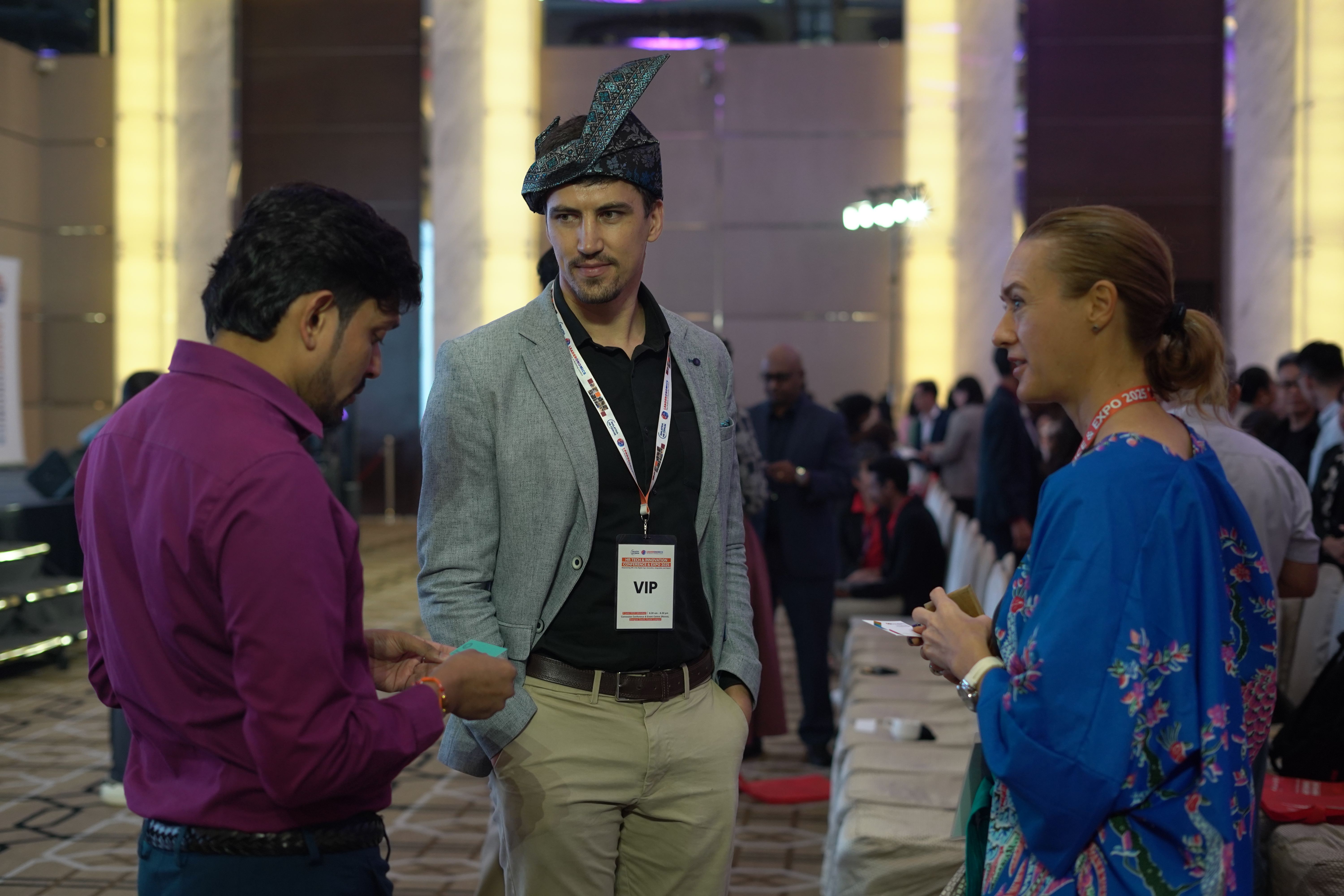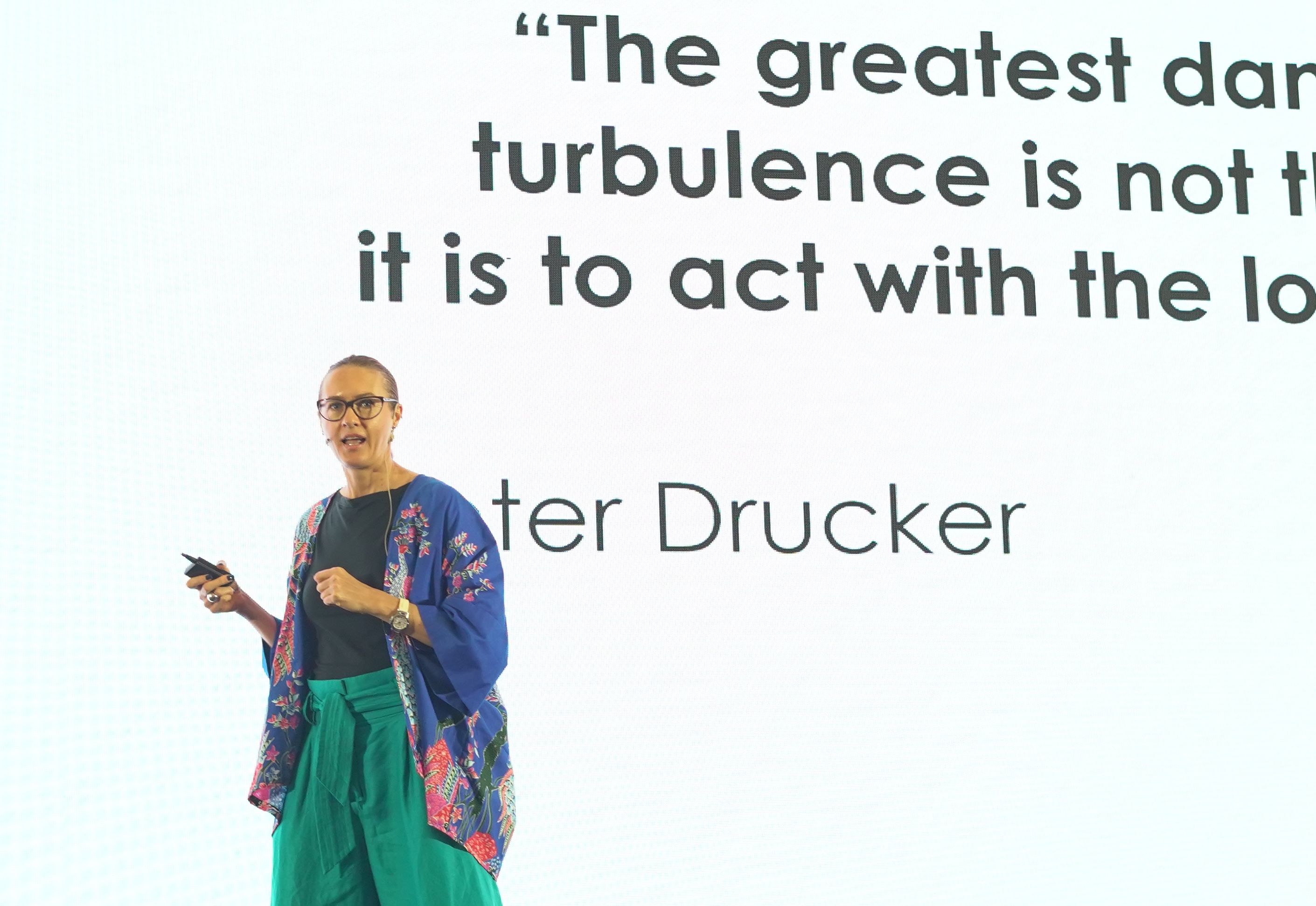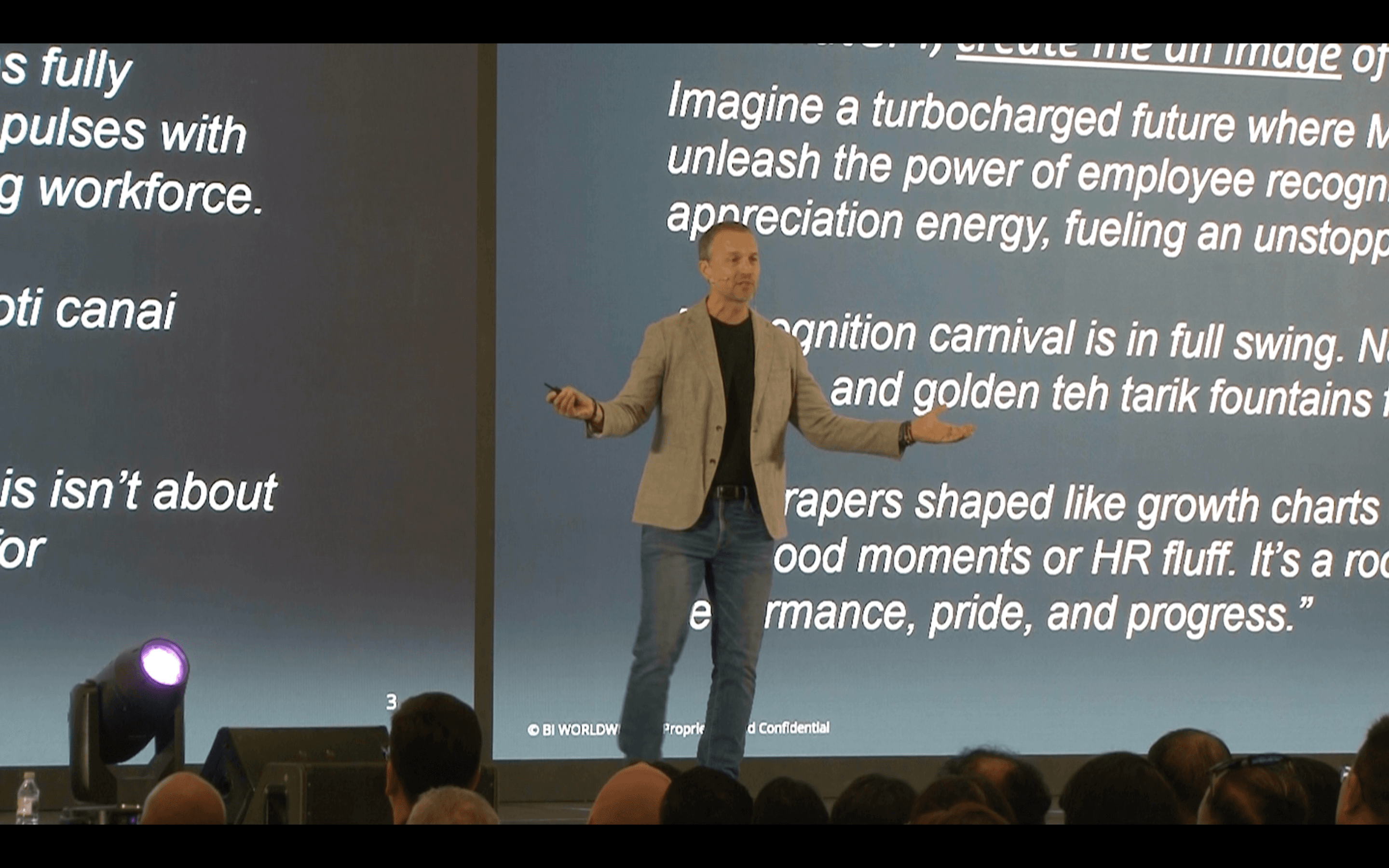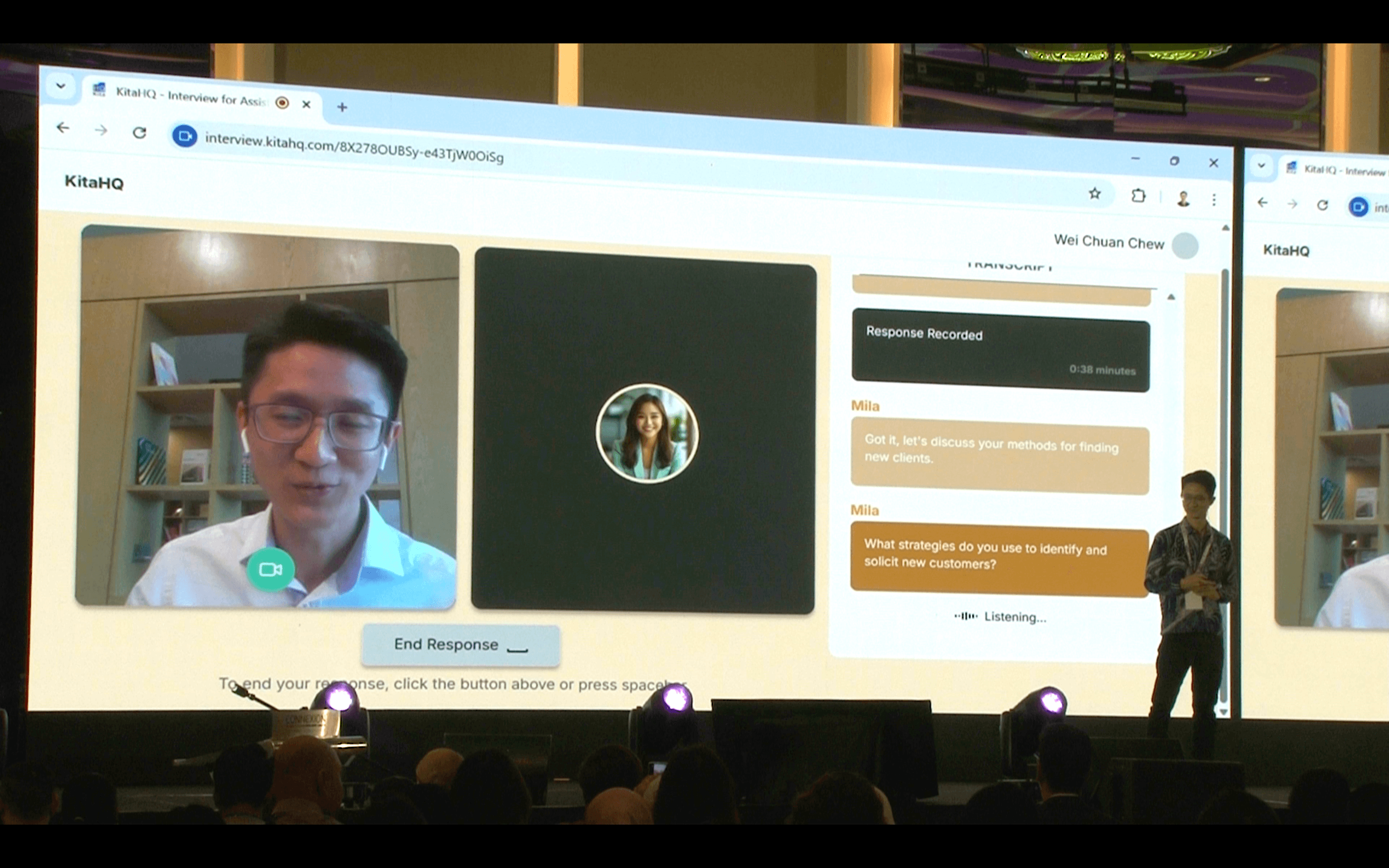How to Empower HR in the Digital Age: 7 Insights for 2025 (Part 1)

Natanaelginting from Freepik
Explore the speaker decks from HR Tech Conference & Expo 2025 here.
Today, HR must evolve into a connector: integrating across departments, aligning with business strategy, and making the most of emerging technologies. This was the key message shared by Arulkumar Singaraveloo, Co-founder and CEO of the Malaysia HR Forum, at the HR Tech & Innovation Conference & Expo 2025.
Instead of dwelling on the usual “bad economy” narrative, it’s time to ask a better question, why do some companies thrive while others struggle?
The answer isn’t always complex. Many simply fail to keep up with the fast-changing landscape. Even worse, not all are even trying to move in the right direction.
So how can your HR team move forward with clarity and impact? Here are 7 practical insights you can start applying today:
1. Turn People Data into Employee Intelligence
Roshan Thiran, Founder of Leaderonomics

Roshan Thiran
As a leader who transitioned from finance and business leadership to technology and HR, Roshan has witnessed these industry shifts firsthand.
Roshan noted there are currently no established standards for emerging technologies. We’re living through the convergence of three revolutions: physical (robotics, 3D printing), digital (blockchain, generative AI), and biological (genomics). Ultimately, this fusion is creating a landscape defined by uncertainty, rapid change, and ongoing experimentation.
HR leaders are already feeling the pressure, often juggling contradictory demands. They are expected to triple last year’s performance while safeguarding employee well-being. To standardize HR systems while simultaneously personalizing employee experiences.
It may sound impossible—but it doesn't have to be.
Technology is now enabling HR to manage these tensions. It’s no longer about control, but more about real-time navigation. The modern HR role is evolving into what Roshan calls the Know the Business Leader, the strategic driver of employee intelligence.
Here’s what that looks like in practice:
- Understand Insights: Leverage data to uncover what truly drives employees.
- Create Experiences: Translate those insights into meaningful, high-impact employee experiences.
- Simplify the Process: Collect insights, translate data into insights, use insights to create actions/experiences.
The hardest part? We are standing at the edge of something new—where data meets empathy, and technology meets trust. It’s more than a shift in tools or titles. HR needs to invest the time to understand how work is evolving and play an active role in shaping what comes next.
2. Move from Misconceptions to Meaningful Use
Anatoliy Fedorenko, Solution Architect at Mad Devs

Anatoliy Fedorenko
As AI becomes more common in the workplace, many organisations are taking a misguided approach, often due to a lack of understanding about how AI should actually be used. Some companies hire new talent to implement AI even when it’s not necessary for their work. Others assume AI always functions flawlessly. On the flip side, some feel (understandably) threatened but choose to avoid using AI altogether.
To avoid these common misconceptions, Tony, a leading AI expert and world-class technologist, introduces three core pillars of effective AI integration:
Adopting
This refers to the initial step of consciously bringing AI tools into daily operations and gradually improving their use.
- Begin using generative AI tools
- Understand AI’s limitations
- Subscribe to AI-related newsletters and podcasts to stay informed
Problems Solved by Adopting AI: AI can significantly reduce time spent on tasks like filtering CVs, analyzing eNPS, preparing monthly reports, creating individual growth plans, answering repeated staff questions, and preparing job postings and interviews.
Adapting
This involves changing how people, roles, and systems interact with AI tools.
- Conduct AI literacy workshops for all HR staff
- Create a “Prompt Library” tailored to the company’s context for HR teams
- Use more advanced AI tools like Retrieval Augmented Generation (RAGs) and AI Agents
Problems Solved by Adapting AI: This approach addresses issues such as teams ignoring or misusing new AI tools, tasks still being done manually out of habit, employee uncertainty about AI's impact on their jobs, and inaccurate results from AI due to poor prompting.
Augmenting
This represents the highest level of integration, focusing on elevating human capability through strategic collaboration with AI, beyond just automation or tool adaptation.
- Enable AI-augmented personal development plan for employees
- Transform managers into AI coaches
- Build Human-AI pairing protocols
Problems Solved by Augmenting AI: Augmenting AI can address challenges like employees feeling their development is irrelevant, workforce planning being too complicated, missing cultural or emotional signals, promotions based on opinions instead of data, and HR messages that don’t connect at scale.
Read: Why Influential Leaders Know How to Set the Right Pace
3. Build Mindsets, Not Just Skill Sets
Elena Dolmat, Executive Coach

Elena Dolmat
We’re surrounded by more information than ever before. We watch one type of content, and the algorithm feeds us even more.
With AI, gaining access to skills, tools, and techniques is just a few clicks away. We keep pouring more into our “glass”.
Elena calls this Horizontal Development: adding knowledge, accumulating skills, the practice of doing more. But the real issue? Many leaders don’t have the mindset or capacity to make sense of it all. The glass overflows. Or worse, it becomes a confusing mix of inputs. Some useful, some not—leaving us unclear and overwhelmed.
That’s where Vertical Development truly matters. Elena emphasized that real leadership growth is not just about knowing more, but about thinking differently. It’s about expanding how we see the world, deepening our awareness, and building the inner capacity to handle complexity and change.
To quote her, "We don’t see the world as it is. We see the world as we are."
It’s a powerful reminder that effective leadership begins from within. Not just with what you know, but with how you interpret, adapt, and respond.
Unlike skill-building, this kind of growth can’t be delivered through courses. It unfolds over time, shaped by lived experiences or intentionally cultivated through reflection, challenge, and coaching.
Now the question is: in this era of endless knowledge, are we also guiding leaders to make better meaning of it?
4. Design Culture That Listens
Wong Xiao Qing, Director of People Experience at Sandisk

Wong Xiao Qing
Drawing from her leadership journey across GE, Mars, and now SanDisk, Xiao Qing brings an insider view on how large organisations actually operationalize culture. Her message is simple but powerful: culture is action, and technology is what helps us connect that action to insight.
She highlighted the role of real-time data in enabling psychological safety, inclusion, and performance at scale. Rather than waiting for annual surveys to learn how employees feel, SanDisk now pilots tools that gather daily feedback (tracking stress levels, recognition moments, feedback loops) just like a fitness tracker does for health. This kind of immediate insight gives leaders the ability to respond in real time, identify patterns, and address challenges before they escalate.
At the heart of her approach is the belief that inclusion and performance are not at odds. In fact, they reinforce each other. When people feel safe, heard, and seen, they do their best work.
Xiao Qing closed with three practical takeaways for HR leaders:
- Lead with insight: Use timely data to understand the hearts and minds of your people.
- Earn leadership support: Culture change isn’t an HR-only job, it needs champions across the business.
- Move from insight to action: Data means nothing if it doesn’t lead to better decisions and real change.
Read: How to Embed AI in Your Organisational DNA: 5 Insights for 2025
5. Be a Proactive and Tech-Savvy HR
Datuk Dr. Nora A. Manaf, Former Group Chief Human Capital Officer of Maybank

Datuk Dr. Nora A. Manaf
While other speakers focused on the exciting possibilities of AI in HR, Datuk Nora offered a cautionary perspective. She pointed to the rising number of HR layoffs at companies like Airbnb and IBM as a warning: HR functions that fail to adapt are at risk.
According to Datuk Nora, these layoffs signal that businesses increasingly see HR as underperforming and lacking tech-savviness. She emphasized that HR leaders are not only responsible for their own careers—but also for the livelihoods of those they serve. This makes redefining HR's role not just important, but urgent.
New technology has raised the bar for what’s expected from HR. Today, outcome-oriented digital literacy is essential. It's no longer enough to know trendy platforms. What matters is the ability to:
- Understand the purpose of the task (e.g., improving employer branding)
- Choose the right tool (e.g., using Instagram Reels or LinkedIn posts to highlight team events or employee testimonials)
- Use it efficiently to achieve results (e.g., increasing job applications by 20%)
This practical mindset is part of a larger shift in how HR must operate. Datuk Nora encourages HR professionals to go beyond just learning tools by actively shaping their own roles and relevance. Her broader advice included:
- Use what you have: You don’t always need expensive tools, just become skilled at using what's already available.
- Stay in control: Humans must guide the technology, not be ruled by it.
- See tech as freedom, not fear: Use the efficiency gained from technology to create a better life instead of stress.
- Keep evolving: Don’t just improve old systems. Proactively experiment with new ways of working, even within your current role. She shared how HR professionals in her network are already redefining their roles, moving beyond traditional titles like “HR Business Partner”.
If HR wants to stay relevant and indispensable, it must stop running on the spot. Datuk Nora closed with a powerful reminder, “HR has the opportunity to not only shape the future of work, but to shape a better future for people.”
6. Activate Employees Through Strategic Recognition
Marcus Westling, Global Rewards & Recognition Expert

Marcus Westling
The rise of AI, hybrid work, DEI, and wellness has reshaped employee expectations in Southeast Asia. At the heart of this shift is what Marcus calls the "Me Culture"—a workforce that demands more personalized, meaningful, and empowering work experiences.
Marcus challenged HR leaders to rethink employee recognition. Not as a feel-good perk, but as a strategic driver of engagement and business growth.
He shared the case of a global beverage company that used recognition to activate over 60,000 employees as brand ambassadors. Staff submitted leads for outlets not carrying their products, and upon successful sales, they were rewarded with points and public acknowledgment.
The results were striking:
- Conversion rates jumped from 10% to 43%
- Program participation quadrupled
- Over $40 million USD in new revenue was generated
This demonstrated that when done strategically, recognition can directly drive business outcomes.
Most importantly, it’s not just about results. Marcus urged HR leaders to also recognize learning, progress, and actions aligned with company values:
- Top Performance (annual/quarterly excellence)
- Milestones (work anniversaries, loyalty)
- Results (sales, KPIs, team wins)
- Learning (completed trainings, certifications)
- Progress (career growth, improvements)
- Behaviors (actions aligned to company values and strategy)
This ecosystem allows HR not only to engage employees, but to activate them around what truly matters to the business. In doing so, HR can move from being a support function to a growth engine.
7. Don’t Just Pilot AI
Wei-Chuan Chew, Co-founder and CEO of KitaHQ & KitaLulus

Wei-Chuan Chew
As a startup founder and early Grab team member, Wei-Chuan didn’t talk about AI as an emerging trend. He showed what it looks like in action.
He shared a McKinsey survey that revealed employees are three times more likely than leaders to use AI for over 30% of their work. This disconnect can potentially be a missed opportunity and a growing risk.
Without HR guidance, AI adoption becomes fragmented, inconsistent, and potentially damaging to both culture and fairness.
The future isn’t coming. It’s already being improvised by your people. And that’s exactly why HR can’t afford to lag behind the very people it’s meant to support, quoting Wei-Chuan.
He highlighted that Gen AI has the power to unlock 30–50% productivity gains across HR, especially in areas like recruitment, employee engagement, and shared services.
To bring this vision to life, he developed KitaHQ, an AI-powered platform that reimagines how interviews and assessments are done. Its AI assistant, Mila, can:
- Generate smart, relevant questions based on job requirements
- Conduct structured, scalable interviews
- Evaluate candidates with customizable, bias-free scoring
But this wasn’t about replacing humans. Wei-Chuan reminded us that AI gives HR the scale to connect more meaningfully with top talent.
Continue reading Part 2 here.
Step Into the Room Where Leaders Grow
Leadership
Tags: HR, Artificial Intelligence, Digital, Consultant Corner, Executing Leadership, Case Studies
Anggie is the English editor at Leaderonomics, where creating content is an integral part of her daily work. She is never without her trusty companion: a steaming cup of green tea or iced latte.







